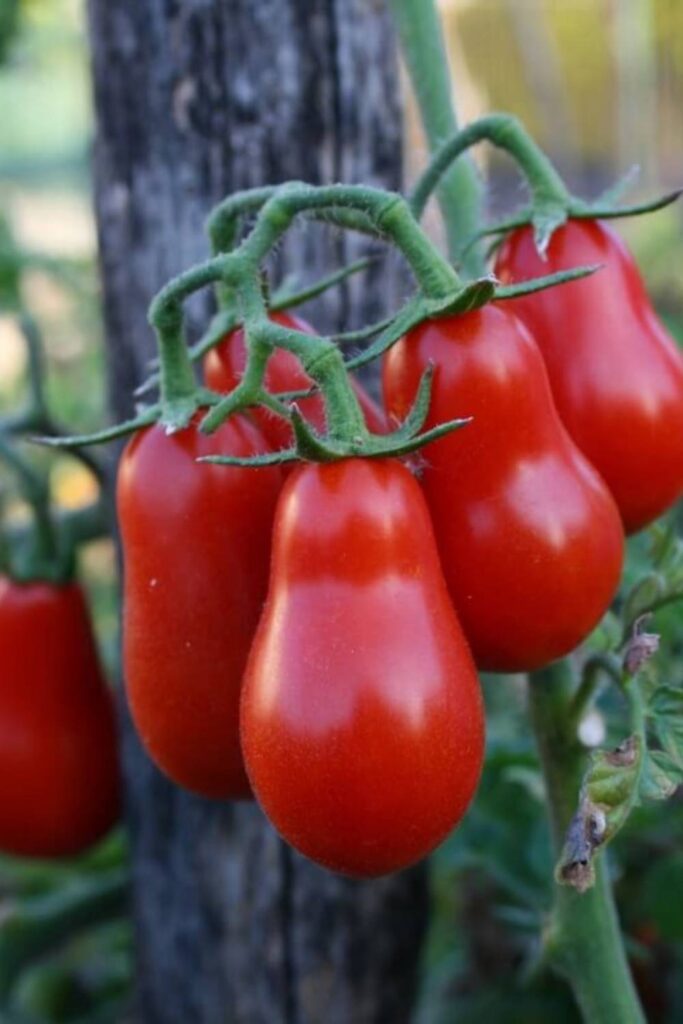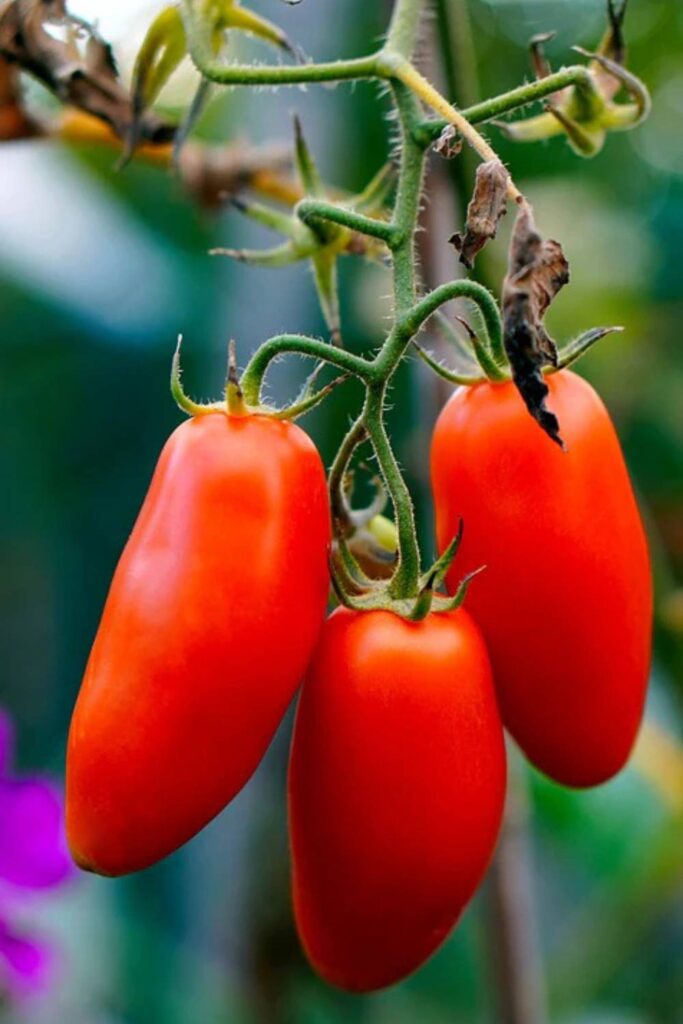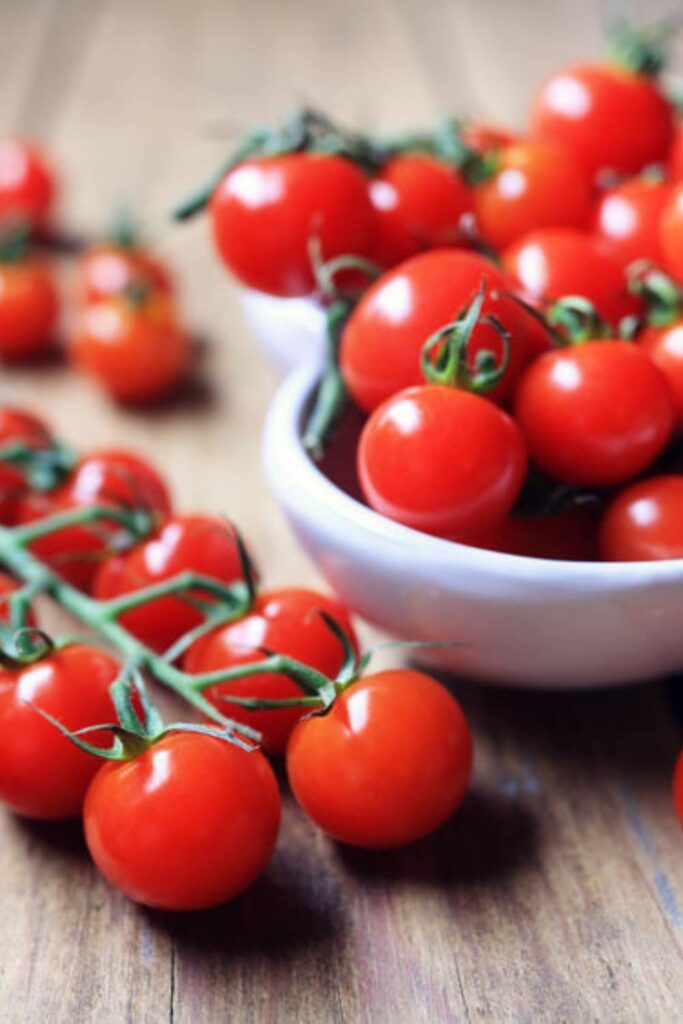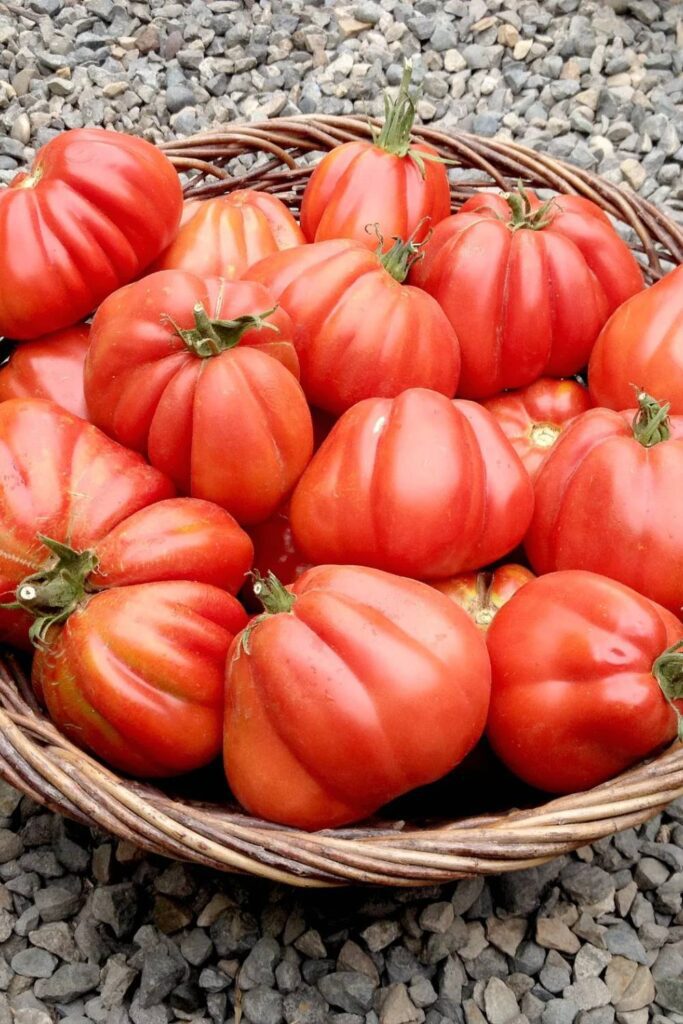Italy’s tomatoes are nothing short of extraordinary. From vibrant cherry tomatoes to robust plum varieties, each type is tailored to specific dishes that have shaped Italian cuisine for centuries.
Introduced to Italy in the 16th century, tomatoes were initially met with skepticism—many believed they were poisonous! Over time, they became the heart of Italy’s most iconic recipes.
Today, many varieties hold IGP (Indicazione Geografica Protetta) or DOP (Denominazione di Origine Protetta) certifications, celebrating their deep connection to the land. Let’s explore seven iconic Italian tomato varieties, each paired with recipes to help you bring their magic into your kitchen.
1. Corbarino
- Where They Grow: Corbara, near the Monti Lattari in Campania
Known as Pomodorini di Corbara, these small, pear-shaped tomatoes thrive in the volcanic soil near the Amalfi Coast. Their perfect balance of sweetness and acidity makes them a go-to for sauces. They’re especially wonderful in seafood dishes, where their tang complements the brininess of fresh fish.
| Key Traits | Why They’re Special |
|---|---|
| Sweet-tangy flavor | Perfect for balanced, vibrant sauces. |
| Grown in volcanic soil | Rich in nutrients, enhancing their natural flavor. |
Try it in: Mussels, Clams, and Shrimp in Spicy Tomato Broth for a dish that highlights the tomato’s tangy brightness.

2. Datterini
- Where They Grow: Southern Sicily, Puglia, Campania
These “little dates” are known for their exceptional sweetness and delicate, oval shape. Revived two decades ago, Datterini come in both red and yellow varieties. The sunny yellow type, in particular, is as sweet as candy, making it perfect for raw dishes or light summer meals.
| Variety | Flavor Profile | Best Use |
|---|---|---|
| Red Datterini | Balanced, sweet | Sauces or fresh in salads. |
| Yellow Datterini | Exceptionally sweet | Snacks or pairing with cheese. |
Try it in: Zucchini Spaghetti with Sun Gold Tomato Sauce, which uses the natural sweetness of tomatoes for a delightful pasta alternative.
3. Roma
- Where They Grow: Lazio (around Rome)
The Roma tomato is a kitchen staple for sauces, paste, and canning. Known for its thick, meaty texture and low seed count, it’s a favorite of home cooks and gardeners alike. Its rich flavor deepens when cooked, making it a must-have for hearty recipes.
| Why Home Cooks Love Roma Tomatoes |
|---|
| Thick flesh for rich, flavorful sauces. |
| Low water content prevents sogginess. |
Try it in: Turkey Meatballs in Tomato Sauce for a comforting dish that makes Roma tomatoes shine.

4. San Marzano
- Where They Grow: Agro Sarnese-Nocerino Valley, Campania
San Marzano tomatoes are the gold standard for sauces. DOP-certified, they’re known for their sweet, low-acid profile and fewer seeds, which make them perfect for smooth, rich marinara or pizza sauce. Grown in volcanic soil, they’re always sold whole or as filets in jars or cans.
| Feature | Why It Matters |
|---|---|
| Fewer seeds | Creates smoother sauces without straining. |
| Meaty texture | Ideal for slow-simmered dishes. |
Try it in: Spicy Tomato Sauce for a versatile base to use in your favorite Italian recipes.
5. Pachino
- Where They Grow: Pachino, Sicily
These sweet, crunchy tomatoes hail from the salty, brackish soils of southern Sicily. Their natural sugar content is higher than most, giving them a sweet yet slightly salty profile. They’re perfect in raw dishes or as a garnish to add a burst of flavor.
| Fun Fact |
|---|
| Pachino tomatoes are so beloved that they’ve appeared on a commemorative Italian postage stamp! |
Try it in: Cherry Tomato Gazpacho for a refreshing summer dish bursting with tomato flavor.

6. Piennolo del Vesuvio
- Where They Grow: Vesuvius-Monte Somma, Campania
These small, cherry-like tomatoes are harvested in clusters and often stored by hanging them (“piennoli”) to dry naturally over winter. Their thick skins protect them from drying out, while their tangy flavor shines in robust dishes.
| Unique Features | Why They Matter |
|---|---|
| Thick skin | Extends shelf life for months after harvest. |
| Robust, tangy flavor | Perfect for roasting or preserving. |
Try it in: Stuffed Tomatoes to highlight their bold flavor in a simple, comforting dish.
7. Cuor di Bue
- Where They Grow: Liguria, Abruzzo, Calabria
Known as the oxheart tomato, the Cuor di Bue is famous for its massive size and juicy flesh. Its sweet, mild flavor makes it a salad favorite, pairing beautifully with creamy cheeses and fresh herbs.
| Why Cuor di Bue Stands Out |
|---|
| Large size makes them ideal for slicing. |
| Sweet, mild flavor complements fresh dishes. |
Try it in: Frittata with Asparagus, Tomato, and Fontina Cheese for a hearty yet light breakfast or brunch option.

Why Italian Tomatoes Deserve the Spotlight
Italian tomatoes are a testament to the beauty of terroir. From the salty air of Sicily to the volcanic soils of Campania, each variety is a product of its environment, delivering unique flavors that elevate any dish.
Whether you’re simmering a rich sauce, preparing a refreshing gazpacho, or slicing tomatoes for a fresh salad, let Italian tomatoes inspire your next meal.









